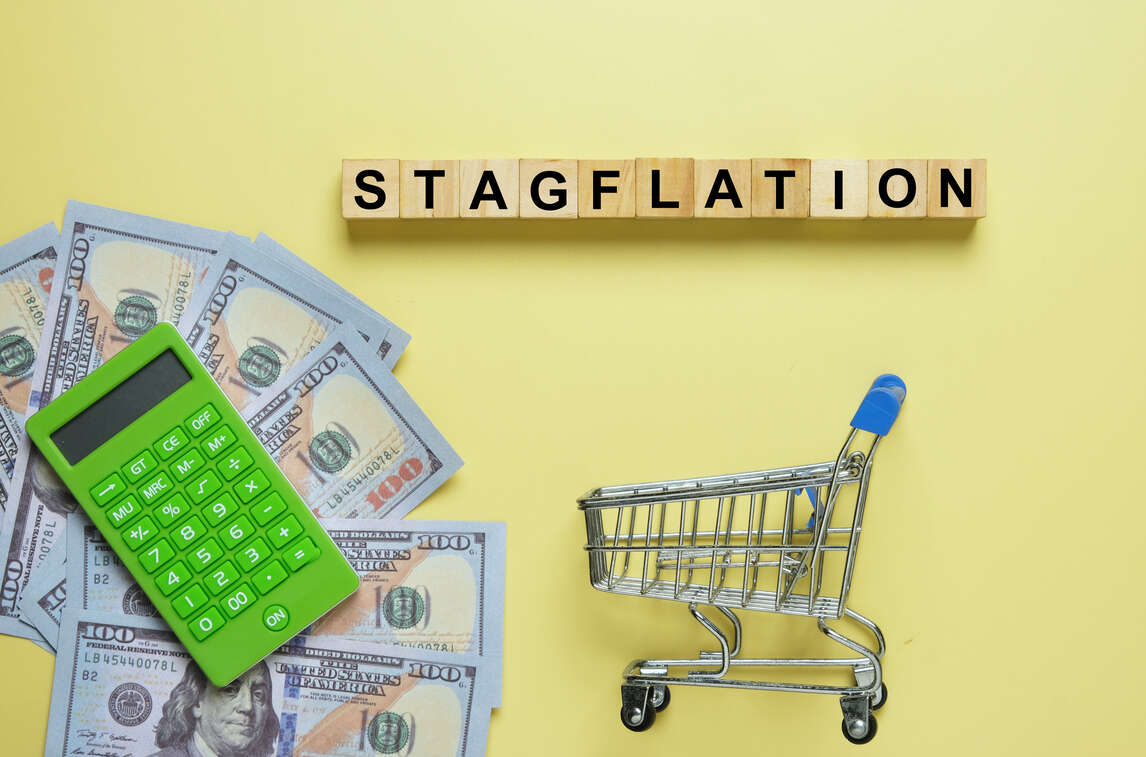Simplifying Life Insurance in India
What is Stagflation and How to Prevent It?

Stagflation is a very rare economic scenario in which two or more negative economic trends combine together and create a dreadful economic crisis. These trends include rising unemployment, high inflation and poor growth. This scenario has taken place two or three times in the past hundred years.
In this guide, we will let you know what stagflation is and everything related to this economic crisis.
What Is Stagflation?
Stagflation is a situation where a country's economy experiences slow or zero economic growth, high unemployment and significant inflation. Economic policymakers consider such a scenario very hard to handle. Further, an attempt to correct one factor can cause adverse effects during such a scenario.
Economists thought stagflation to be an impossible scenario. However, the world has seen stagflation several times since the oil crisis of 1970.
What Is the History of Stagflation?
It was originally thought that stagflation was impossible. In particular, a macroeconomic policy was portrayed as a trade-off between unemployment and inflation in the economic theory of the Phillips Curve, which emerged due to Keynesian economics.
Economic experts became concerned about deflation risks due to the Great Depression and the rise of Keynesian economics. They concluded that most policies intended to lower inflation typically tend to increase unemployment, while those intended to lower unemployment tend to raise inflation. Since then, it has been demonstrated that inflation can endure even during weak or negative economic development.
How Does Stagflation Work?
Is Stagflation Bad?
Slow economic growth, higher-than-average unemployment, and high cost of living combine together and lead to stagflation. Irrespective of an individual's point of view, that circumstance will hurt.
When inflation is out of control, that activity becomes risky, leaving people and businesses with tight budgets worrying about rising debt service costs and escalating prices for necessary goods. In addition to being a very unpleasant place to live, this problem is difficult for governments to resolve. Stagflation can persist for years without a simple solution, severely harming the economy.
What Are the Examples of Stagflation?
Here are three examples of stagflation:
- We can examine the economic situation of the United States in the 1970s for a perfect illustration of historical stagflation. The 1950s and 1960s saw the nation go through a period of rapid economic growth as the Federal Reserve increased demand and kept unemployment rates low.
- However, during the 1960s, earnings were unable to cope with the soaring prices of consumer goods. Supply shock was also caused by the oil embargo issue, with sectors suffering from sky-high prices of oil that had a domino effect.
- Moreover, Zimbabwe experienced stagflation in the years 2018 and 2019. This is a newer instance. The government flooded the market with ample money supply in response to a string of economic shocks in order to address the growing national debt and a drop in economic production. Stagflation resulted from a sluggish economy coupled with rising inflation.
How to Prevent Stagflation?
Here are some ways to control stagflation:
- Tax Measures: Lowered corporation and income taxes are one of the best preventative measures to control stagflation. This is because it leads to a reduction in labour costs and an increase in the demand for labour. Similarly, cutting down on GST is another way to stop prices from rising.
- Pay Control: With the help of government assistance, a wage control plan can be implemented to control wage increases. Due to the rise in salary, firms tend to reduce employment and production. Hence, limiting the wage rises can help stop the wage inflation cycle and strengthen a country’s economy.
- Supply-Side Solutions: Boosting the average supply with the help of supply-side policies, like deregulation and privatisation, can improve efficiency and reduce production costs. This turns out to be one of the most effective ways to control stagflation.
- Monetary Policy: Reducing inflation should be a major macroeconomic objective. In simple terms, reducing inflation can cause a significant increase in unemployment and slow economic growth.
- Bringing Changes in the Labour Market: Labour market frictions should be reduced by making it quicker and less expensive to learn about job opportunities. Entry-level requirements for a job role should be lowered, as should restrictions on maintaining high wage levels.
To sum it up, now that you know what is stagflation, it is important to know that there is no complete cure for it. Economists suggest increasing productivity to such an extent that it will result in higher growth without inflation. This will aid in reducing stagflation's inflation component even more. To solve supply-side problems, the government should include all relevant parties. The government can avoid stagflation in the economy by bringing down food costs.
FAQs About What Is Stagflation
What is the best thing one can do during stagflation?
How can individuals protect themselves from stagflation?
How can you prepare yourself for stagflation?
Individuals can plan their finances for stagflation in the following ways:
- Improving the credit score
- Reducing spending
- Paying down ongoing debts
- Keeping emergency savings
- Finding additional income sources
What is the primary cause of stagflation?
What happens in stagflation?
Does stagflation affect the premium of term insurance?
Can life insurance help protect my savings from stagflation?
Other Important Articles Related to Inflation and Financial Planning
Important Articles About Financial Planing




















